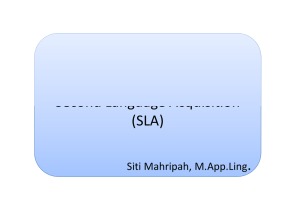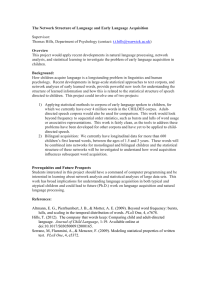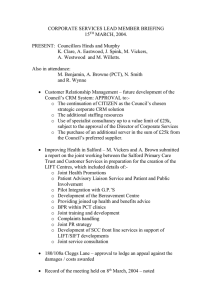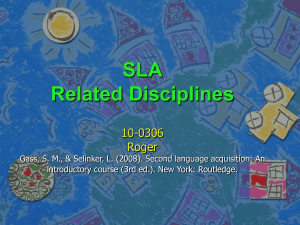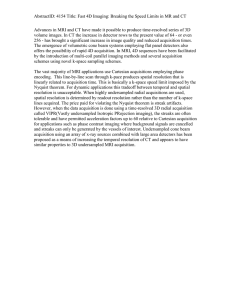ABSTRACT ABSTRACT RESEARCH PROJECT: STUDENT:
advertisement
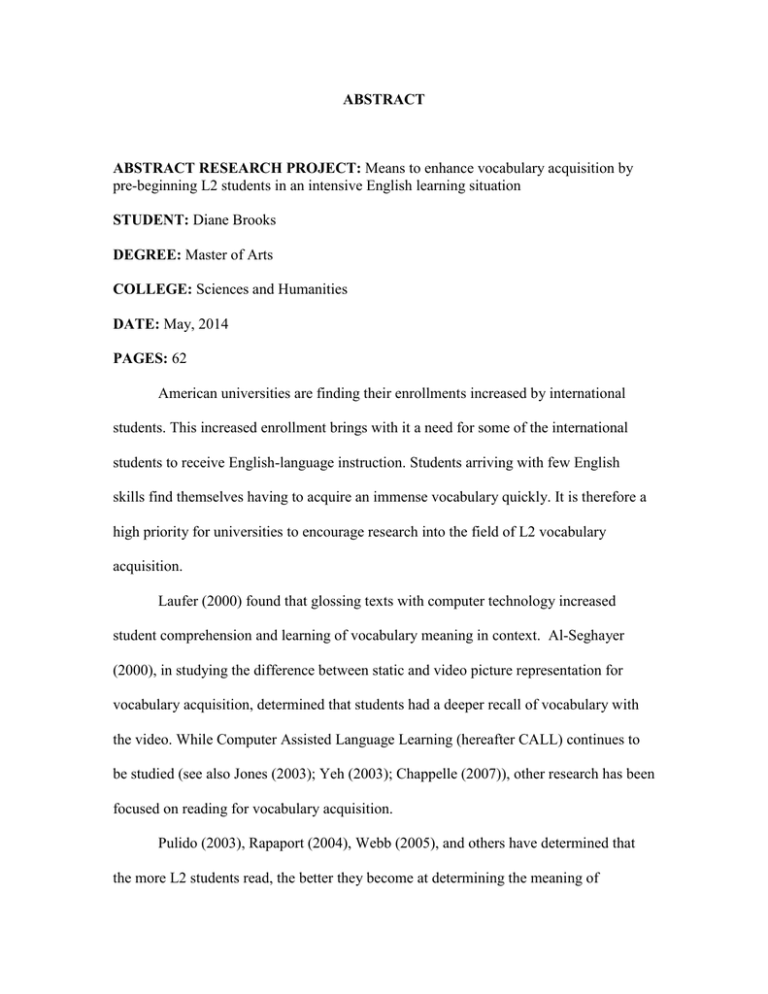
ABSTRACT ABSTRACT RESEARCH PROJECT: Means to enhance vocabulary acquisition by pre-beginning L2 students in an intensive English learning situation STUDENT: Diane Brooks DEGREE: Master of Arts COLLEGE: Sciences and Humanities DATE: May, 2014 PAGES: 62 American universities are finding their enrollments increased by international students. This increased enrollment brings with it a need for some of the international students to receive English-language instruction. Students arriving with few English skills find themselves having to acquire an immense vocabulary quickly. It is therefore a high priority for universities to encourage research into the field of L2 vocabulary acquisition. Laufer (2000) found that glossing texts with computer technology increased student comprehension and learning of vocabulary meaning in context. Al-Seghayer (2000), in studying the difference between static and video picture representation for vocabulary acquisition, determined that students had a deeper recall of vocabulary with the video. While Computer Assisted Language Learning (hereafter CALL) continues to be studied (see also Jones (2003); Yeh (2003); Chappelle (2007)), other research has been focused on reading for vocabulary acquisition. Pulido (2003), Rapaport (2004), Webb (2005), and others have determined that the more L2 students read, the better they become at determining the meaning of vocabulary in context. The findings stipulate that even lower-level students can determine word meaning by being exposed to the same words many times in a setting. The most current research has been directed towards the psycholinguistic arena – investigating how the brain learns (Bundgaard-Nielsen, (2012): Bialystok, (2007)). This research has shown that neuro-pathways are indeed improved through encoding and storing with multi-sensory presentation of materials. Paivio (1986, 2001, 2007) demonstrated that the combination of imagery and audio information created a ‘Dual Processing’ in the brain, thereby increasing processing for reading and listening. Little research has been done, however, in creating materials that combine the multi-sensory approach for reading and listening comprehension with CALL for the lower-level L2 vocabulary student. Students in an Intensive English program have very few days from the start of the session to the end of the session. The pre-beginning students have roughly 700 vocabulary words to learn within that short time. That would seem impossible, however using a combination of CALL, including videos, audio definitions, “read-alongs,” with a text-based program will provide the pre-beginning student the best chance at learning, and recalling both receptively and productively, this large lexicon. It is therefore my intent to create such a session, essentially bombarding each student with as much opportunity to hear, see, say, and form muscle memory in each class session to enhance their acquisition of the specified vocabulary. If the materials are beneficial to the augmentation of vocabulary acquisition, the departmental exam scores of students who have used the materials should show a higher level of vocabulary acquisition than exams from students who have not had the advantage of such a program.







